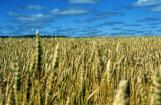2
Although the fur and lumber industries predate agriculture in the New Liskeard area, farming has sustained this small town for over 100 years, and continues to impact our way of life.To many, northern Ontario might seem an unlikely place from which to make a living from farming - comparatively short growing season, heavily-forested land, and the black flies...!
In the 1890's, settlers came to Northeastern Ontario, seeking cheap, available land. Thanks to the prehistorical geological phenomenon which formed a rift valley, the farmland surrounding what is now New Liskeard, is also very fertile. Rich topsoil rests on clay resulting in the Little Clay Belt.
The Little Clay Belt area in Ontario ranges from just south of Kirkland Lake down to the present-day City of Temiskaming Shores (the former towns of Dymond, Haileybury and New Liskeard) and encompasses many townships in between. Each of those townships has its own unique stories to tell and over the years, local authors and historians have successfully done just that. This exhibit will focus primarily on the economical and cultural impact of the agriculture industry on the growth of New Liskeard.
This exhibit is a tribute to those adventurous, and often enterprising, men and women who homesteaded the Little Clay Belt.
